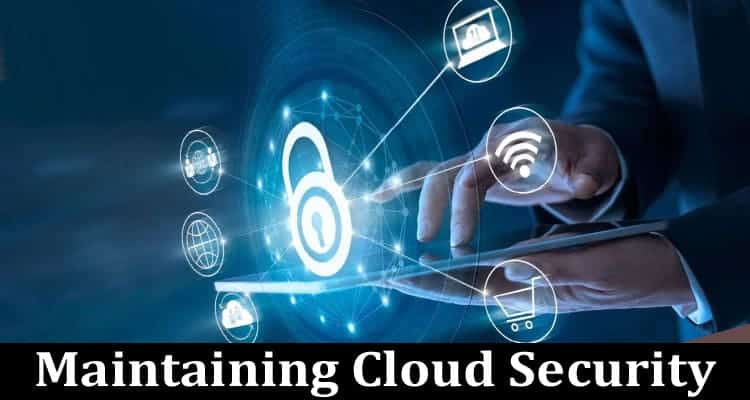In today’s digital age, businesses and organizations have increasingly turned to cloud computing to streamline operations, enhance scalability, and reduce infrastructure costs. Cloud technology has undoubtedly revolutionized the way we store, process, and access data. However, using cloud services introduces new challenges, particularly regarding protection. Identity and Access Management (IAM) is essential for ensuring the security and integrity of cloud-stored data. In this comprehensive article, we will investigate the critical and multifaceted role of IAM in cloud security.
Understanding IAM:
Identity and Access Management (IAM) is an extensive system for managing and controlling access to cloud resources. It involves defining and managing the roles, permissions, and policies that govern who can access specific data or services within the cloud environment. IAM ensures that only authorized individuals or systems can interact with sensitive information, preventing unauthorized access and potential security breaches.
IAM serves as the gatekeeper to an organization’s digital assets. It acts as the custodian of digital identities, ensuring that the right people have access to the right resources. In cloud security, IAM encompasses various processes and technologies working to safeguard data and systems.
Access Control:
One of the primary functions of IAM is access control. IAM systems enable organizations to define, monitor, and manage user access to their cloud resources. It involves assigning permissions, such as read, write, or delete, and determining which users or systems can perform particular actions. Access control is essential in preventing unauthorized users from accessing confidential or sensitive data.
IAM provides granular control over user access, allowing organizations to tailor access rights to the principle of least privilege. This principle ensures that users have only the access necessary to complete their tasks, lowering the risk of data exposure and insider threats.
Authentication and Authorization:
IAM systems rely on authentication and authorization processes to validate users’ identities and determine their access level. Authentication ensures that a user is who they say they are, typically using passwords, multi-factor authentication (MFA), or biometrics.
Conversely, after verifying a user’s identity, authorization determines the actions they are permitted to perform. It’s the process of defining permissions and associating them with specific users, roles, or groups. This step is critical in preventing unauthorized users from accessing and modifying sensitive data.
IAM also supports implementing role-based access control (RBAC), where permissions are assigned based on job functions. This approach simplifies access management and ensures that individuals only have access to the resources necessary for their roles.
Compliance and Audit:
Compliance with industry-specific regulations and security standards is a top priority for many organizations. IAM systems help ensure compliance by enforcing security policies, tracking user actions, and generating audit logs.
IAM solutions facilitate the monitoring of user activities within the cloud environment, enabling organizations to review access history and detect any unusual behaviour. It assists in quickly identifying and mitigating security threats. Furthermore, audit trails and logs produced by IAM systems are invaluable for compliance reporting and demonstrating adherence to security standards.
Enhanced Security Posture:
IAM is integral to maintaining a robust security posture in the cloud. By effectively managing user identities and their access to cloud resources, organizations can significantly reduce the attack surface. When IAM works correctly, unauthorized access, data breaches, and data leaks are less likely to occur.
IAM solutions can also enhance security by enforcing robust authentication methods, such as MFA, and regularly prompting users to update their passwords. Moreover, IAM supports the zero trust principle, where trust is never assumed, and strict access controls are applied even within the organization’s network.
IAM is a critical component in protecting an organization’s cloud infrastructure from cyber threats and ensuring the confidentiality, integrity, and availability of data. Organizations can effectively mitigate risks, comply with regulatory requirements, and uphold a solid safety record in an ever-complicated and constantly changing cloud environment by implementing IAM best practices.
IAM Best Practices
When it comes to maintaining cloud security, IAM is a powerful tool. However, to achieve actual effectiveness, it must be implemented thoughtfully and in adherence to best practices. Here are some critical IAM best practices:
- Principle of Least Privilege (PoLP)
Grant users and systems the minimum access required to perform their duties. The result reduces the possibility of unauthorized access and limits the impact of security incidents.
- Multi-Factor Authentication (MFA)
Implement multi-factor authentication (MFA) for every user account to add an extra layer of security. It could be a thing the user knows (such as a username and password), a concept the consumer has (such as security tokens), or even something that the user is (such as biometrics).
- Regular Access Reviews
Periodically review and update user permissions. Ensure permissions align with job roles and responsibilities, and promptly remove access for employees who no longer require it.
- Automate IAM Processes
Leverage automation to streamline IAM processes. Automation can help enforce policies consistently and reduce the risk of human error.
- Centralized IAM Policy Management
Centralize the management of IAM policies to ensure consistency and streamline policy updates.
- Regular Security Training
Educate users and administrators about the importance of strong IAM practices and security awareness. It can help to reduce the possibility of social engineering and phishing attacks.
- Monitor and Audit User Activity
Implement continuous monitoring and auditing of user activity to detect and respond to suspicious behaviour promptly.
- Encryption of Data
Encrypt data at recuperate and while in transit to avoid unauthorized access to private information.
- Incident Response Plan
Develop and keep up a response strategy to deal with security incidents and violations in an efficient and timely way.
- Regular Security Assessments
Perform regular checks for safety and penetration tests to detect IAM system flaws as well as weaknesses.
The Evolving Role of IAM
IAM is a dynamic discipline. As the threat environment shifts and fresh innovations emerge, the role of IAM evolves and adapts. Here are some of the factors influencing the evolving role of IAM in cloud security:
- IoT Integration
As the Internet of Things (IoT) grows, IAM becomes increasingly essential for managing device identities and access to cloud resources. Ensuring that only authorized IoT devices can access data and services is crucial.
- Machine Learning and AI
IAM employs machine learning and artificial intelligence to detect unusual behaviour patterns and potential security threats. These technologies can help automate threat detection and response.
- Cloud-Native IAM
IAM solutions are evolving to better integrate with cloud-native technologies and microservices. In cloud environments, such allows for more granular control and automation.
- User Experience
Employees are growing accustomed to a seamless and user-friendly experience from IAM solutions. SSO solutions and self-service portals for password resets and access requests are examples.
- Regulatory Compliance
IAM solutions are adapting to the changing regulatory compliance landscape, such as GDPR and CCPA. It includes making tools available for data access and deletion requests.
- Biometric Authentication
For increased security, biometric identification methods such as recognizing faces and fingerprint scans are gaining popularity in IAM systems.
Conclusion
In conclusion, IAM plays a pivotal and evolving role in maintaining cloud security. It is a multifaceted discipline encompassing identity management, access control, authentication, authorization, compliance, and enhanced security posture. By implementing IAM best practices and adapting to the evolving security landscape, organizations can effectively protect their cloud resources and data from various threats. From implementing IAM, organizations need a reliable partner who can implement IAM solutions without hampering business operations. Click here to check best reliable partner for implementing IAM and Cybersecurity as per the industry standards.
As businesses increasingly incorporate the cloud as a fundamental element of their digital transformation, it’s essential to emphasize the significance of IAM. It serves as the guardian of the digital realm, ensuring that only the right individuals or systems have access to critical data and services. In an era of ever-present cyber threats, IAM is a cornerstone of cloud security, safeguarding organizations and their sensitive information.






